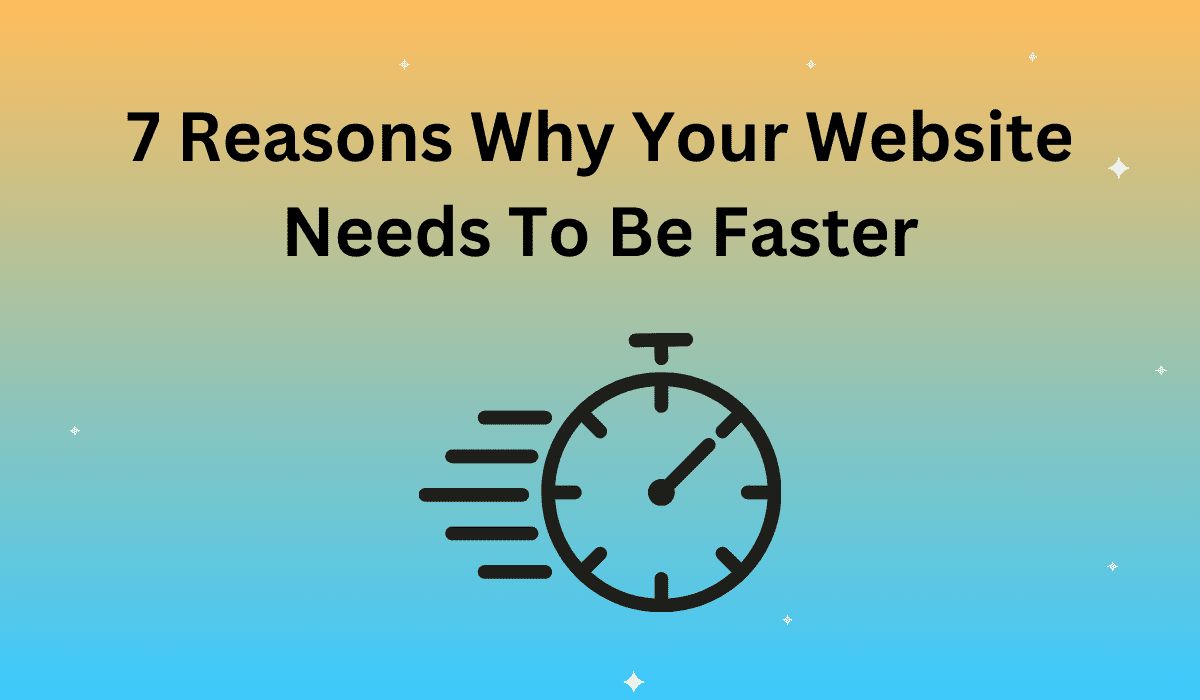It’s one thing to say you should improve your website speed, and another thing when you see the numbers. Turns out there’s a ton of well-documented statistics surrounding website performance, customer engagement, conversion, and how they’re all related. Without further ado, here are 7 reasons why you absolutely need to have a faster website:
Attention Spans Are Short
The human attention span in 2013 is infamously shorter than the memory span of a goldfish (8 seconds versus 9 seconds). According to Alertbox, this means that:
- 0.1-second loading time seems instantaneous
- 1-second loading time doesn’t interrupt our thought process.
- 10 seconds barely keeps our attention.
We Have a Need to Feel Control
According to basic psychology, humans are more satisfied and calmer when they feel in control of a situation. This applies to website loading times, where a longer loading speed equates to a perceived loss of control. In fact, according to User Interface Engineering, people who complete a task while navigating a site perceive the site as faster than a similar site on which they were unable to complete a task, regardless of which site is actually faster.
Big Business Doesn’t Like Slow Loading Times
This shouldn’t come as a surprise, but there’s actual data on how bankers and brokers are more critical of slow websites than the average American. According to Forrester Research, 56% of bankers and brokers expect web pages to load in 2 seconds or less, and will be dissatisfied and unlikely to recommend a service based on a negative experience.
Website Speed Affects Engagement
Which is not to say that the general public will be much more forgiving than bankers and brokers. Aberdeen Group did a comprehensive study on website loading times and engagement, and found the following:
- 57% of online consumers abandon a site after waiting 3 seconds for a page to load.
- 32% of online consumers abandon a site between 1 and 5 seconds.
- a site that loads in 3 seconds will see 22% fewer page views and a 50% higher bounce rate than a site that loads in 1 second.
- a site that loads in 5 seconds will see 35% fewer page views and a 105% higher bounce rate.
- a site that loads in 10 seconds experiences 46% fewer page views and a 135% higher bounce rate.
If that wasn’t bad enough, Microsoft and Google reported the following statistics:
- 8 out of 10 people will not return to a “slow” site.
- 3 out of these 8 people will tell others about their bad experience.
Website Speed Affects Conversion
The obvious corollary to engagement is conversion. Aberdeen Group, Microsoft, and Google also reported the following when it came to conversion:
- a 1-second delay equals 11% fewer page views, 16% decrease in customer satisfaction, and 7% loss in conversions.
- a 2-second slowdown leads to 2% fewer queries and users clicking 3.75% less often.
- 37-49% (almost half) of site visitors who experience performance issues will abandon a transaction and switch to a competitor site.
- 77% will share their experience with others.
- Issues with site performance affect revenue by up to 9%.
People Like Speed
Not everyone likes speed on the open road, but everyone likes a faster website. The Nielsen-Norman Group reports that 39% of online consumers say speed is more important functionality.
Big Companies Have The Proof
There’s nothing more compelling than a well-detailed case study. Fortunately, plenty of large corporations from Amazon to Yahoo have documented the effects of increased website speed on revenue. From Web Performance Today:
- Amazon increases revenue by 1% for every 100 milliseconds of improvement.
- Mozilla shaved 2.2 seconds off its landing pages and increased download conversions by 15.4% – or 60 million more Firefox downloads per year.
- Shopzilla increased its landing page loading time from 6 seconds to 1.2 seconds and experienced a 12% increase in revenue and a 25% increase in pageviews.
- Yahoo increases traffic by 9% for every 400 milliseconds of improvement.











